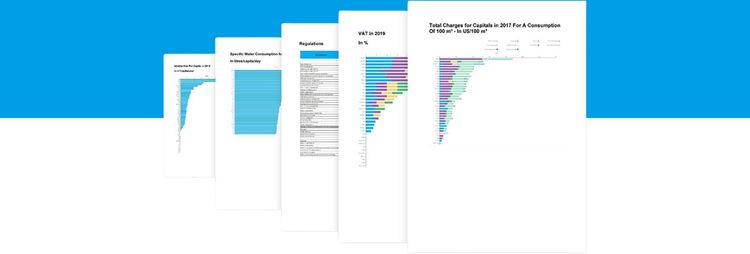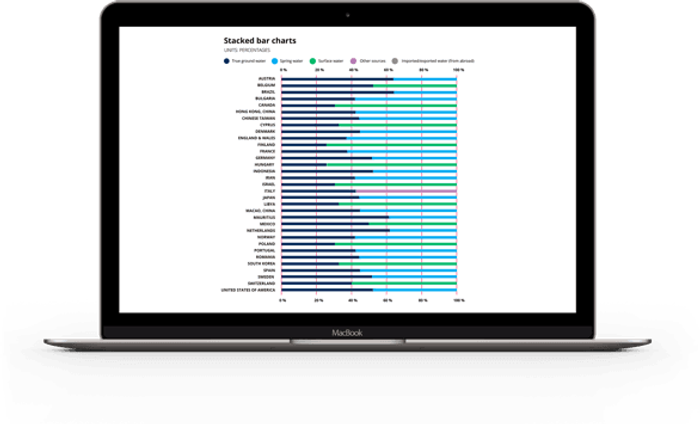About International Statistics for Water Services
This report is now in its sixteenth edition, and this update contains data from 46 countries and more than 250 cities worldwide. This report enables high-level comparisons concerning abstraction, consumption, tariff structure and regulation of water services globally.


Interpreting the graphs correctly
The explanatory notes give more background information to interpret the data in the right way.
All data are on country and city level, NOT on a company level.
All financial data are converted to US$, the latest known exchange rate of December 2023.
The exchange rates vary in time. Therefore it is not possible to compare charges in time.

Tips and tricks
There is a wide range of statistics from abstraction to charges – Select the Statistic Type of data from the list.
Depending on the statistic type, you can make a selection of a volume for 100 m³ or 200 m³ and for the years between 2014 and 2023 – Choose the Volume/Year.
If you want to compare, please select all cities and/or all countries in the pop-up menu or mark the preferred selection – Select the Countries/Cities.
Click the Generate button to see the data you’ve selected.
You can Sort by ascending or descending on a specific parameter.
By hovering on the bar, you can read the value.
By hovering over the country/city, you can consult the available explanatory notes. Extensive notes can be consulted by clicking to view more details.
Click the Share button to save the results or share them with others.